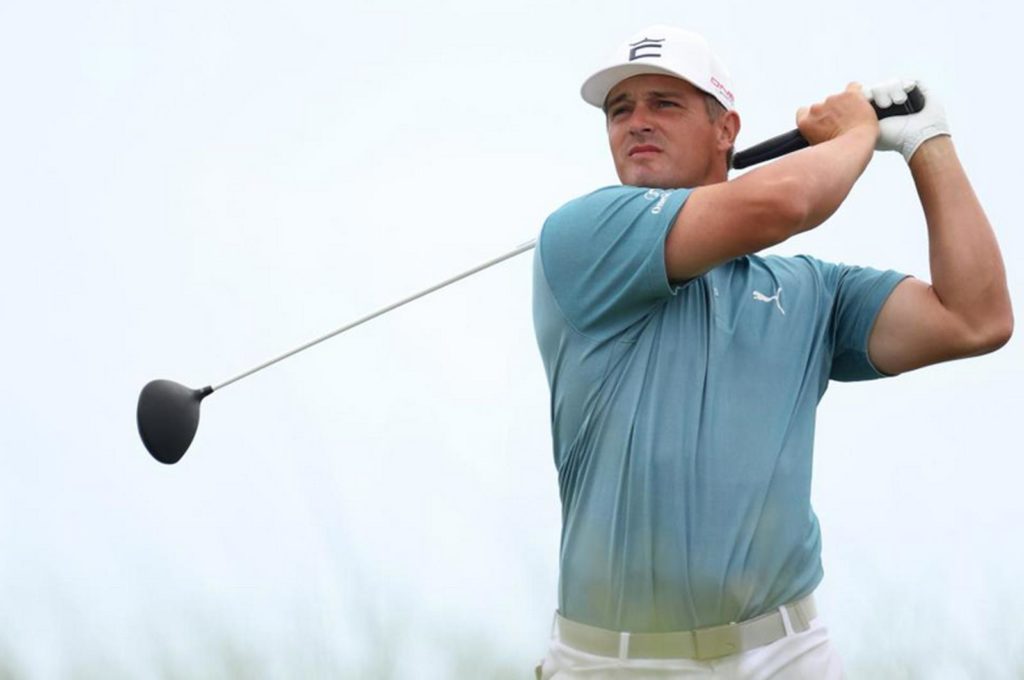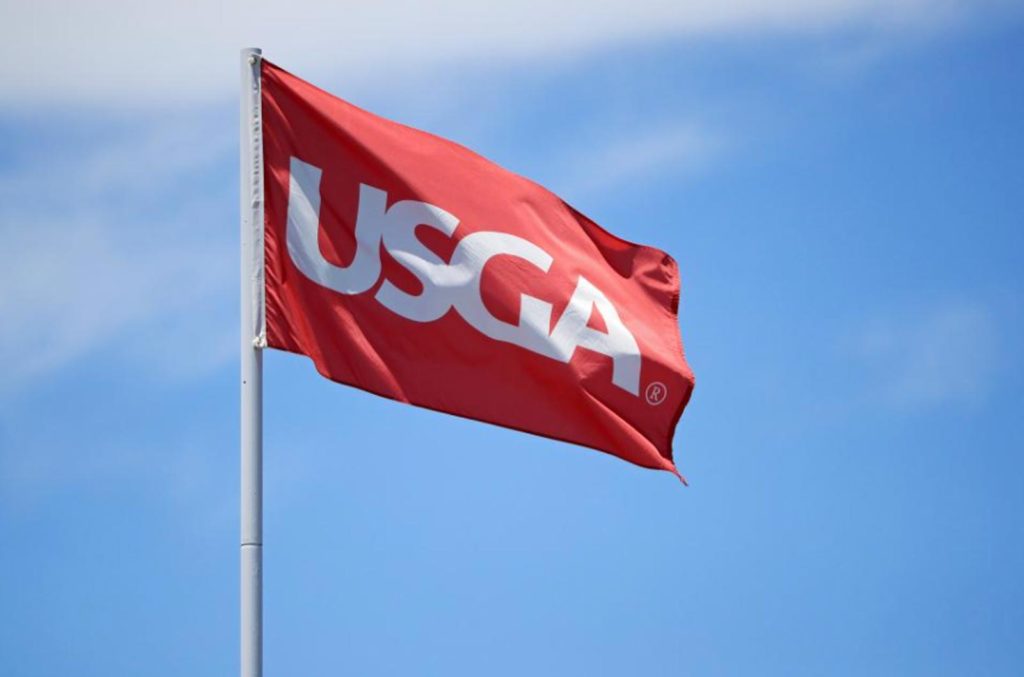Golf’s ruling bodies continued their stated intention to curtail driving distance with an announcement Thursday that if adopted as an equipment rule by the R&A and USGA very likely would make nearly every current golf ball played on tour nonconforming.
The good news? The proposed changes also hint at removing restrictions that might mean average golfers’ driving distance wouldn’t change much at all. It’s part of the ruling bodies’ plan to limit or roll back driving distance of elite male players, while trying not to harm average golfers’ enjoyment of the game.
How the proposed changes, announced Thursday in an R&A/USGA Notice of Areas of Interest, might accomplish stealing from the rich and giving to the poor is complicated, but here’s a primer:
- Part of the ideas in the notice – which are still a long way from anything close to even a proposal for a rule change – would be to increase the swing speed used for testing golf balls. That increase likely would push a majority of current balls over the maximum distance limit.
- But the ruling bodies also are proposing eliminating another part of the ball test that could allow some future ball designs to maximise energy transfer for slower, average golfer swings.
- Other rules ideas in Wednesday’s notice would be to make drivers less forgiving with less springy faces for elite men’s competitions while at the same time eliminating any rules about forgiveness for average golfers.
“We’re moving forward on this important work because we want golf to remain just as strong 50 years from now as it is today,” said Mike Whan, the USGA’s CEO. “It energises all of us to do what is in the best interests of the game and keep it thriving long into the future.”
The R&A and USGA announced in February 2020 their desire for “the cycle of distance increases to stop.”
Manufacturers contacted by Golf Digest declined to comment on Thursday’s R&A/USGA notice. The PGA Tour released a statement pledging to work “more closely than ever” with the ruling bodies, including inviting them to attend an upcoming meeting of the Players Advisory Council.

“We will collaborate with the USGA and the R&A, along with our industry partners, to evaluate and provide feedback on these topics,” the statement reads. “We continue to be committed to ensuring any future solutions identified benefit the game as a whole without negatively impacting the tour, its players or our fans’ enjoyment of our sport, and applaud the transparent process that is being undertaken on these topics.”
Thursday’s document from the ruling bodies updates previous areas of interest from February 2021 that targeted changes to the way balls are tested for conformance and also changes the way clubs are tested for the springiness of the face. An “area of interest” is among the initial steps the R&A and USGA use in studying a potential rule change for clubs and balls. Last year’s notice received what R&A chief executive Martin Slumbers called “constructive feedback.” Slumbers also said, “Our thinking on these areas continues to evolve.”
The notice states firmly that “no decisions have been made about possible solutions and no proposals are being made at this time.” But Thomas Pagel, the USGA’s chief governance officer, said Thursday’s notice and its specific rules ideas was more than just spit-balling.
“Where we are today has been informed by research, it’s been informed by conversations we’ve had with major manufacturers and players, so we don’t think it’s a conversation starter, but it’s certainly a good point for us to engage with the community and say, ‘Here’s what we’re thinking, let us know your thoughts,’” Pagel said. “We’re always open to learning and listening, but one thing I can tell you is we are committed to addressing the cycle of increased hitting distances.”
The new proposed idea to change the conformance test for golf balls would look at raising the swing speed from 120 miles per hour to “at least” 125 miles per hour. This is significant because while the swing speed would change, the current limit for distance, known as the “overall distance standard” would not. Right now, many balls are designed to get as close to the ODS limit of 320 yards as possible. With many balls designed to be so close to the edge already, changing the test speed to 125 miles per hour likely would push many over the limit. Why? Here’s one reason: A ballflight simulation model from the University of Waterloo in Canada shows that increasing the swing speed to 125 mph would produce a 16-yard increase in total distance.
The ruling bodies’ logic here is relatively consistent with the past change to the swing speed in the ODS test. In 2004, the speed was changed from 109 miles per hour to the current 120 to more closely reflect tour players at the time. The proposed change again would be designed to reflect current clubhead speeds. According to USGA research of PGA Tour data, the average of the top ten players in clubhead speed for the 2020-21 season was 124.8 mph, while their fastest recorded speeds averaged more than 130 mph. This year, 23 players average more than 120 miles per hour in clubhead speed. None is over 125 miles per hour, however.
John Spitzer, the USGA’s managing director of equipment standards, said the 125-mile-per-hour number isn’t based on any biomechanical theory of human limitations with the golf swing. It’s based on the eye test.
“We don’t know if it’s enough, but we do have a little bit of a crystal ball in the long drive competition. So the question of whether [this kind of speed] is physically possible is answered based on what we’ve seen from those folks.”
As for the number of current balls that such a rule change might make nonconforming, Spitzer said it wouldn’t be all. “There’s a substantial number of balls that wouldn’t run afoul or would require only very minor tweaks,” he said. But when asked specifically whether it would be almost all of the balls played on tour, which based on current sales from Golf Datatech account for 35-40 percent of the market, he said, “Yes. It would be a much higher percentage but not all because there are certain players that fall in love with a ball that might be three generations back.”
While such a rule could make a lot of current balls nonconforming, today’s announcement also includes caveats that could help golfers who don’t generate tour level speeds. Specifically, the ruling bodies put forth the idea of eliminating the other primary golf ball test, what’s known as the initial velocity test. That test has been used for more than 80 years, and it essentially measures how fast balls come off the clubface, not how far they fly. Eliminating it could help slower swingers get more energy out of the ball.
“Manufacturers have been after us for a very long to get rid of that,” Spitzer said. “It doesn’t act as a governor to the hard balls that are used primarily by good players and on tour. What it did do was act as a governor for the balls that are very soft that a lot of slow-swing players prefer. And by getting rid of that we believe it’s going to allow a tremendous amount of innovation space for manufacturers to remove that governor and maybe get a little extra ball speed exclusively for the slower swingers. So they might actually benefit from the way we’re headed here.”
Spitzer also said that while many golfers might have to change to a new version of their favorite tour ball if such a rule change were imposed, they might not notice the difference very much and certainly not as much as a tour player who swings 30 or 40 miles per hour faster.
Steve Otto, the R&A’s executive director-chief technology officer, thinks if manufacturers design balls without the restrictions of the initial velocity test, slower swing-speed players won’t lose distance at the same rate as elite speed golfers. He estimates that if a Bryson DeChambeau at 128 miles per hour were to lose four percent of his distance, a 90 mile-per-hour swinger might only lose three percent, and an 80 mile-per-hour swinger might lose only two percent.

“There’s the removal of IV that allows them to produce longer balls at the slower end, but even moving the testing speed up to 125, they can make a tour ball that satisfies the limit at 125, but might give less reduction at 90 and 80 and not in a linear way,” he said. “It’s sort of an untapped resource and it’s [getting rid of IV] actually something that we’ve been asked to consider for a long time, especially from Japan. There’s been a real interest in producing softer balls that work better for slower swing speeds.”
The notice also looks at changing the rules on clubheads, again in ways that could restrict performance among elite golfers but help recreational players. Specifically, the ruling bodies suggested instituting “model local rules” that would reduce the spring-like effect in drivers and reduce the moment of inertia (MOI) on drivers, but only for those used in elite male competitions. The goal would be “to enhance the reward of a central impact,” the notice reads. That might mean smaller driver heads being played on tour.
Of course, a model local rule wouldn’t affect recreational golfers at all. Even more encouraging to average golfers, the notice suggests it would relax the equipment rules further for average golfers. It suggests doing away with any limit on MOI, making drivers that might be a little more forgiving but maybe even more specifically better for average golfers, the R&A’s Otto said.
“It does give you more scope to move the [club’s centre of gravity],” he said. “It may be less about the MOI and more about being able to move the CG for better launch conditions for that player.”
Otto also believes the tackling the ball and club together makes any potential change more effective. “Because if you just do the ball, it’s like lengthening golf courses, where you’re playing into the hands of the distance players,” he said. “The nod to the club side is about the balance of skill and technology.
“So it’s the hybrid of both club and ball that gives us the possibility to really have a meaningful effect that buys us some time. What that period of time is I don’t know. But the nod to the balance of skill and technology should mean that they don’t all become very fast swing speed players. It’s always exciting to see the fast guys play, but we don’t want them all to be fast guys. We want the balance of a variety of skills throughout the field.”

Otto thinks the equipment rules may have created one type of player over the past 10 years, and it’s just as likely that another rule change would create a different type of player. “Would we have a different Top 100 if we’d made this kind of decision 10 years ago?” he asked.
Pagel said while the science behind these areas of interest has been hard work, he acknowledged that the next steps, specifically consensus-building, will be no less arduous.
“I think that’s the challenge of being the governing body,” he said. “I always tell people that our role is to facilitate. We work with the stakeholders. We make sure that everybody is engaged and part of the conversation. It doesn’t mean that we can adhere to everybody’s views, but it’s important that they feel they are a part of it and that they can influence outcomes. At the end of the day, the governing bodies need to use our judgment to make decisions that are in the best interests of the game, and not just the game today but really thinking about the long-term health of the game.”
The R&A’s Otto echoed those thoughts. “This is a complex problem and it requires a complex solution so we make no excuses that this is a complex announcement,” he said. “Coming out with this announcement allows us to be a little more out there with players, maybe running some pilot events potentially as this year evolves. Getting more feedback from the elite.
“What we want to get out of this is engagement with the industry. We know there’s a lot of expertise at the manufacturers, and having this out there allows us to engage in meaningful conversations with these people.”
In the end, the ruling bodies seem guided by the idea of figuring out a way to take distance away from the men’s game without impacting average golfers. It is not clear whether that could happen in reality, whether manufacturers could develop and market such products or whether tour players, and specifically the PGA Tour, would agree to play by these new limitations if they were enacted.
Pagel said the PGA Tour has not voiced an opinion on these specific ideas, but any implementation is still a long way from reality. “They were engaged with the last areas of interest and now that this has gone to manufacturers, they will be equally engaged and involved,” he said. “It’s far too early in the process [for the tour to support these ideas]. They have knowledge of how we got here and where we’re going. But we haven’t had specific discussions with them, and frankly I don’t think they’ve been informed enough yet to develop a view.”
Whatever the case, the ruling bodies seem interested in acting swiftly. The deadline for comments on the areas of interest, from manufacturers or any interested party including average golfers, is September 2.

